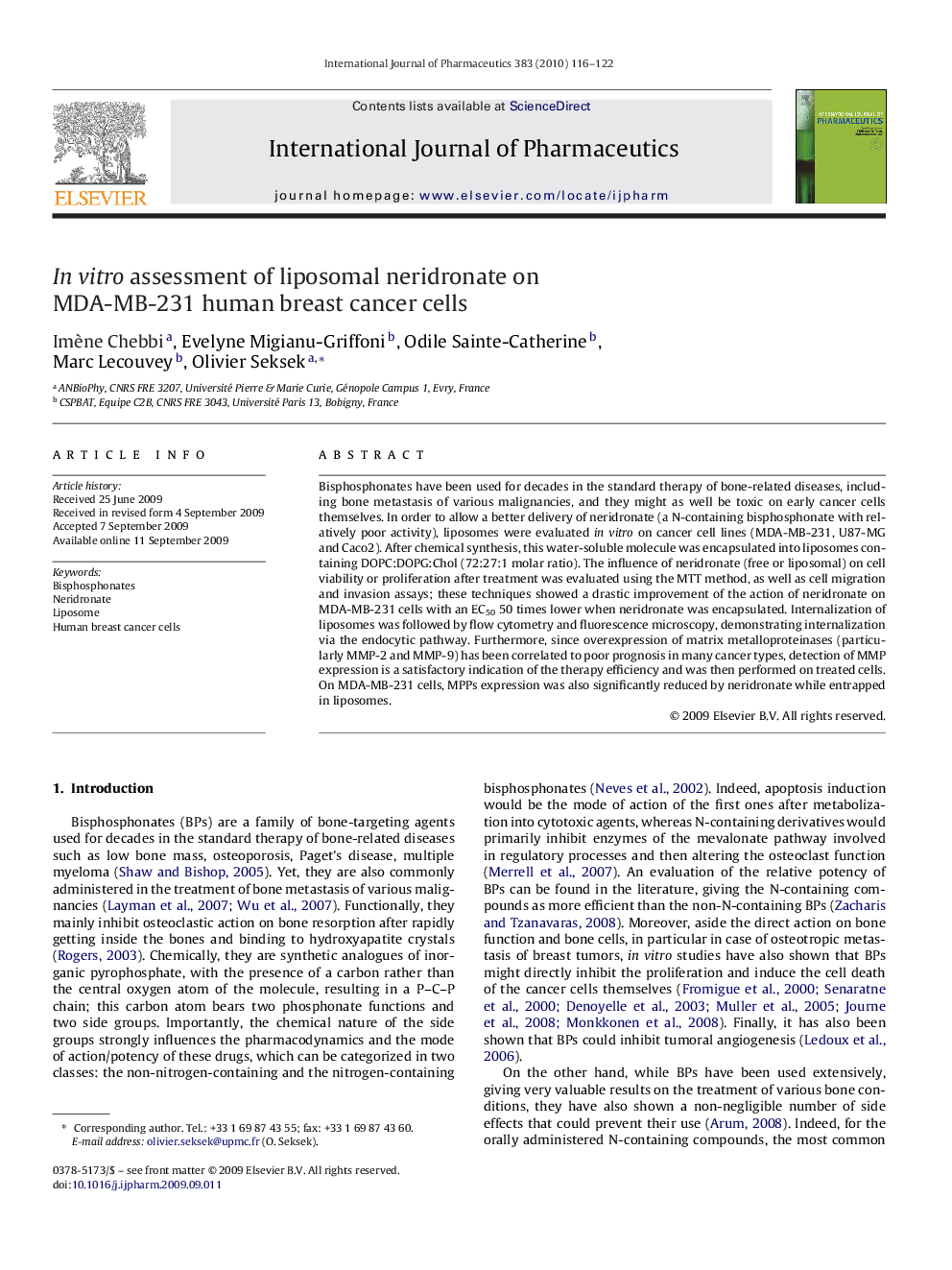| Article ID | Journal | Published Year | Pages | File Type |
|---|---|---|---|---|
| 2504564 | International Journal of Pharmaceutics | 2010 | 7 Pages |
Bisphosphonates have been used for decades in the standard therapy of bone-related diseases, including bone metastasis of various malignancies, and they might as well be toxic on early cancer cells themselves. In order to allow a better delivery of neridronate (a N-containing bisphosphonate with relatively poor activity), liposomes were evaluated in vitro on cancer cell lines (MDA-MB-231, U87-MG and Caco2). After chemical synthesis, this water-soluble molecule was encapsulated into liposomes containing DOPC:DOPG:Chol (72:27:1 molar ratio). The influence of neridronate (free or liposomal) on cell viability or proliferation after treatment was evaluated using the MTT method, as well as cell migration and invasion assays; these techniques showed a drastic improvement of the action of neridronate on MDA-MB-231 cells with an EC50 50 times lower when neridronate was encapsulated. Internalization of liposomes was followed by flow cytometry and fluorescence microscopy, demonstrating internalization via the endocytic pathway. Furthermore, since overexpression of matrix metalloproteinases (particularly MMP-2 and MMP-9) has been correlated to poor prognosis in many cancer types, detection of MMP expression is a satisfactory indication of the therapy efficiency and was then performed on treated cells. On MDA-MB-231 cells, MPPs expression was also significantly reduced by neridronate while entrapped in liposomes.
